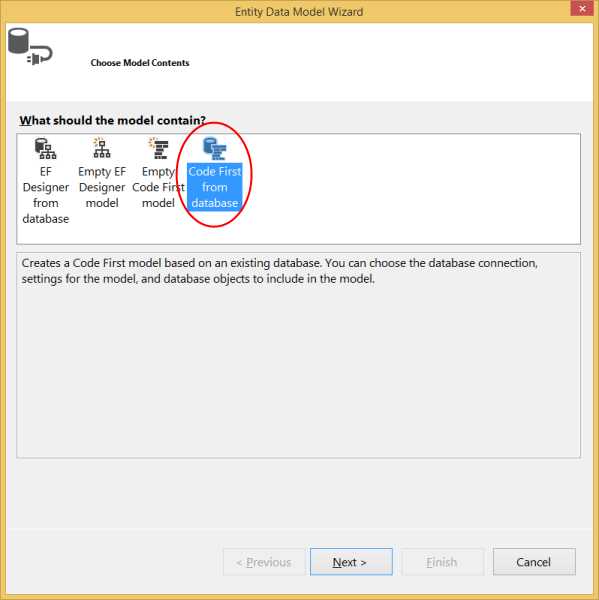标签:post enter menu data form data delete ima ever arc

CREATE TABLE [dbo].[Blogs] ( [BlogId] INT IDENTITY (1, 1) NOT NULL, [Name] NVARCHAR (200) NULL, [Url] NVARCHAR (200) NULL, CONSTRAINT [PK_dbo.Blogs] PRIMARY KEY CLUSTERED ([BlogId] ASC) ); CREATE TABLE [dbo].[Posts] ( [PostId] INT IDENTITY (1, 1) NOT NULL, [Title] NVARCHAR (200) NULL, [Content] NTEXT NULL, [BlogId] INT NOT NULL, CONSTRAINT [PK_dbo.Posts] PRIMARY KEY CLUSTERED ([PostId] ASC), CONSTRAINT [FK_dbo.Posts_dbo.Blogs_BlogId] FOREIGN KEY ([BlogId]) REFERENCES [dbo].[Blogs] ([BlogId]) ON DELETE CASCADE ); INSERT INTO [dbo].[Blogs] ([Name],[Url]) VALUES (‘The Visual Studio Blog‘, ‘http://blogs.msdn.com/visualstudio/‘) INSERT INTO [dbo].[Blogs] ([Name],[Url]) VALUES (‘.NET Framework Blog‘, ‘http://blogs.msdn.com/dotnet/‘)
To keep things simple we’re going to build a basic console application that uses Code First to perform data access:
Project -> Add New Item…
Select Data from the left menu and then ADO.NET Entity Data Model
Enter BloggingContext as the name and click OK
This launches the Entity Data Model Wizard
Select Code First from Database and click Next

Entity Framework Code First to an Existing Database
标签:post enter menu data form data delete ima ever arc
原文地址:http://www.cnblogs.com/liandy0906/p/7136008.html